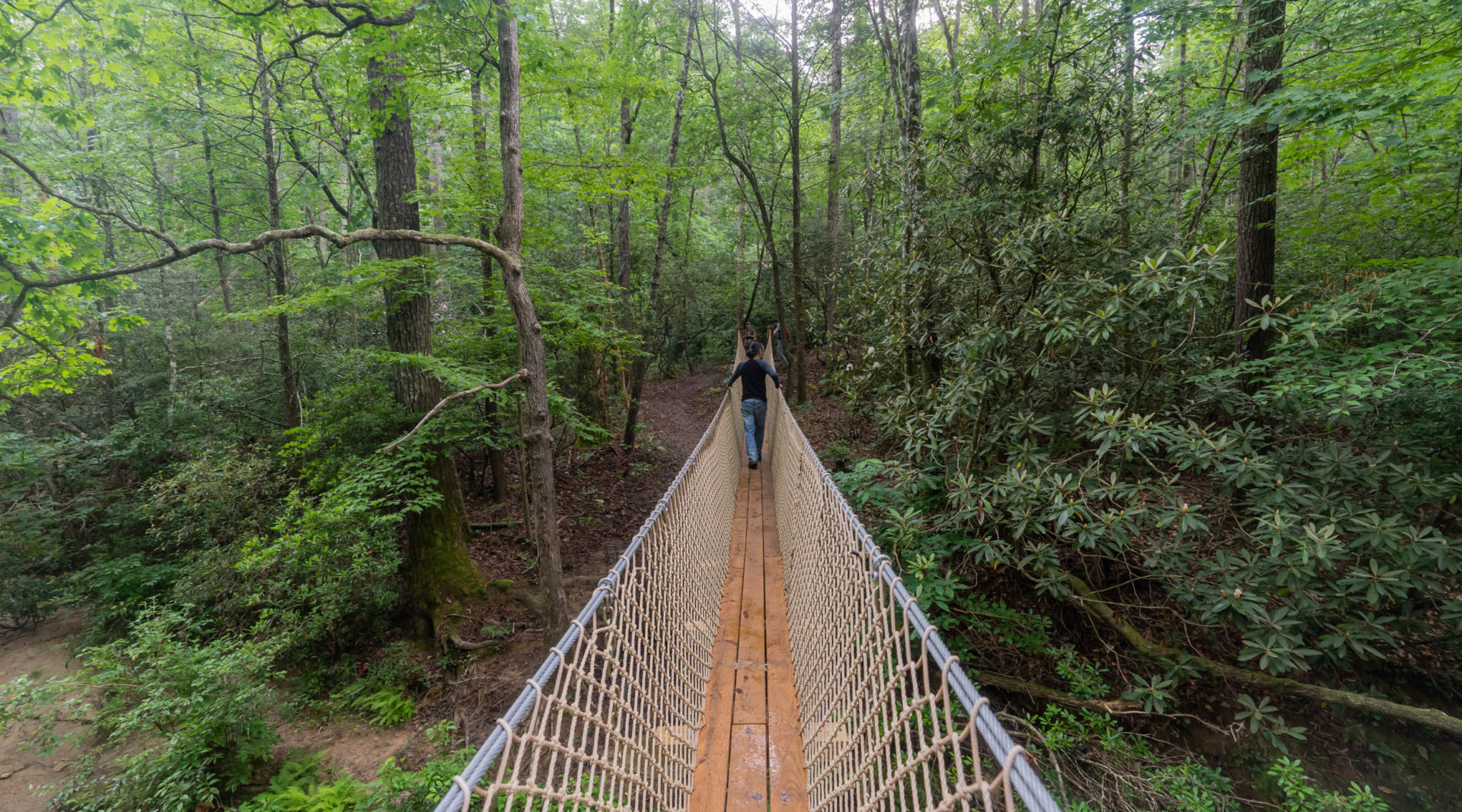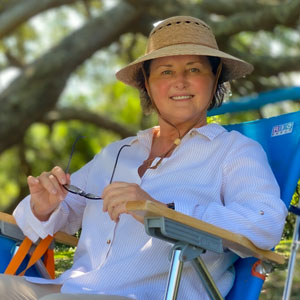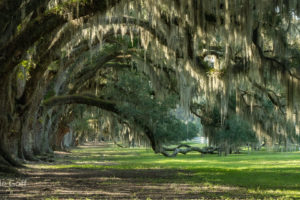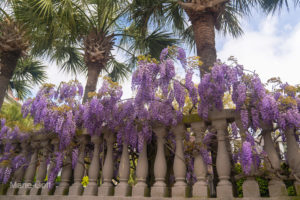Fall in Love with South Carolina – Get Outdoors!
From its mountain tops to its barrier islands, small towns, and cities, the Palmetto State offers a little of everything.
In 2022, Eddie and I participated in the SC 7 Expedition, a collaboration of two nonprofit organizations. We learned a lot about the Palmetto State. We found that you can’t help but fall in love with South Carolina when you get outdoors! For most of the expedition, we hiked along the Palmetto Trail, starting in the upstate, through the midlands, and then along the coast, including the barrier islands. Here are just a few of the sites.
Fall in Love with South Carolina – The Upstate
Stand with one foot in South Carolina and one foot in North Carolina at the top of the state. The observation tower at Sassafras Mountain (3,554 elevation) offers panoramic views in every direction. Zeke Bridge, a 95-foot suspension bridge, offers birds-eye views of the magnificent upstate forests. In addition to flora and fauna, the trails throughout South Carolina, such as the Palmetto Trail, take you through small and large towns across South Carolina. Fall in love with South Carolina in the Upstate.
Fall in Love with South Carolina – the Midlands
The Palmetto Trail goes straight through the historic town of Newberry, South Carolina, and to the heart of the Midlands at the capital in Columbia, South Carolina. The Columbia Canal and Riverfront Park offers stunning views of the Three Rivers Sections of Columbia. The Three Rivers Greenway covers both sides of the river, Columbia and Caycee/West Columbia on the other side. Many historic towns dot the Midlands Region. Abbeville, South Carolina, is home to the charming and historic Belmont Hotel. Ninety Six, South Carolina, is home to Star Fort at The Ninety Six Historic Site, dating to the American Revolution.
The Pee Dee – You will surely fall in love with South Carolina.
South Carolina has more than 200 Revolutionary War battles and skirmish sites. Even older are areas of indigenous tribes dwelling along its waterways and woodlands. Conway, South Carolina, is known and loved for its downtown historic district and scenic riverwalk along the Waccamaw River. Many historical sites in South Carolina began their journey through history as popular sites of indigenous Americans.
Fall in Love with South Carolina – The Lowcountry
The Lowcountry of South Carolina includes its natural environment: waterways, salt marshes, pine savannahs, and maritime forests. The Lowcountry is also filled with picturesque and historic towns, including well-known Charleston, South Carolina. Like most of South Carolina, wildlife is abundant, and hunters enjoy the seasons for it.
How the Public Participates in the SC7 Expedition
The South Carolina National Heritage Corridor publishes a Digital Field Guide with instructions. This and other publications provide information and are filled with beautiful illustrations and pictures. Click the links below to see the South Carolina National Heritage Corridor publications.
Digital Field Guide
Flora & Fauna Guide
Outdoor Adventure Book
Travel Notes
South Carolina has over 352 miles of walking, hiking, and biking trails, which are easy to more challenging. You’ll fall in love with South Carolina!
Partnerships for Success
The South Carolina 7 Expedition is a partnership between Global Eco Adventures (Dr. Tom Mullikin-Chairman) and S.C. National Heritage Corridor (Michelle McCollum-CEO).

Dr. Tom Mullikin, Expedition Leader: “SC7 is an expedition across one of the most beautiful places on earth—the Palmetto State. It is an expedition from the Mountains to the Sea designed to introduce mountains, rivers, waterfalls, trails, and a beautiful coastline and encourage meaningful conversation about conserving these beautiful areas.”
Michelle McCollum – Logistics Officer and Detail Aficionado: “SC7 is a first-of-its-kind expedition to involve thousands of people in one spectacular event. I love being a part of this effort highlighting the work of our residents, communities, and corporations to provide outdoor recreation and protect those resources for future generations.”
More stories about the Palmetto Trail
Get fit and discover the rich history and beauty of South Carolina.
Lake Moultrie Passage with Tom Mullikin and South Carolina 7, 2020
Civil War History and Piedmont Forest on the Palmetto Trail
Live Oaks, Palmettos, and Pines Amid Scenic Coastal Marsh and Maritime Forest



































